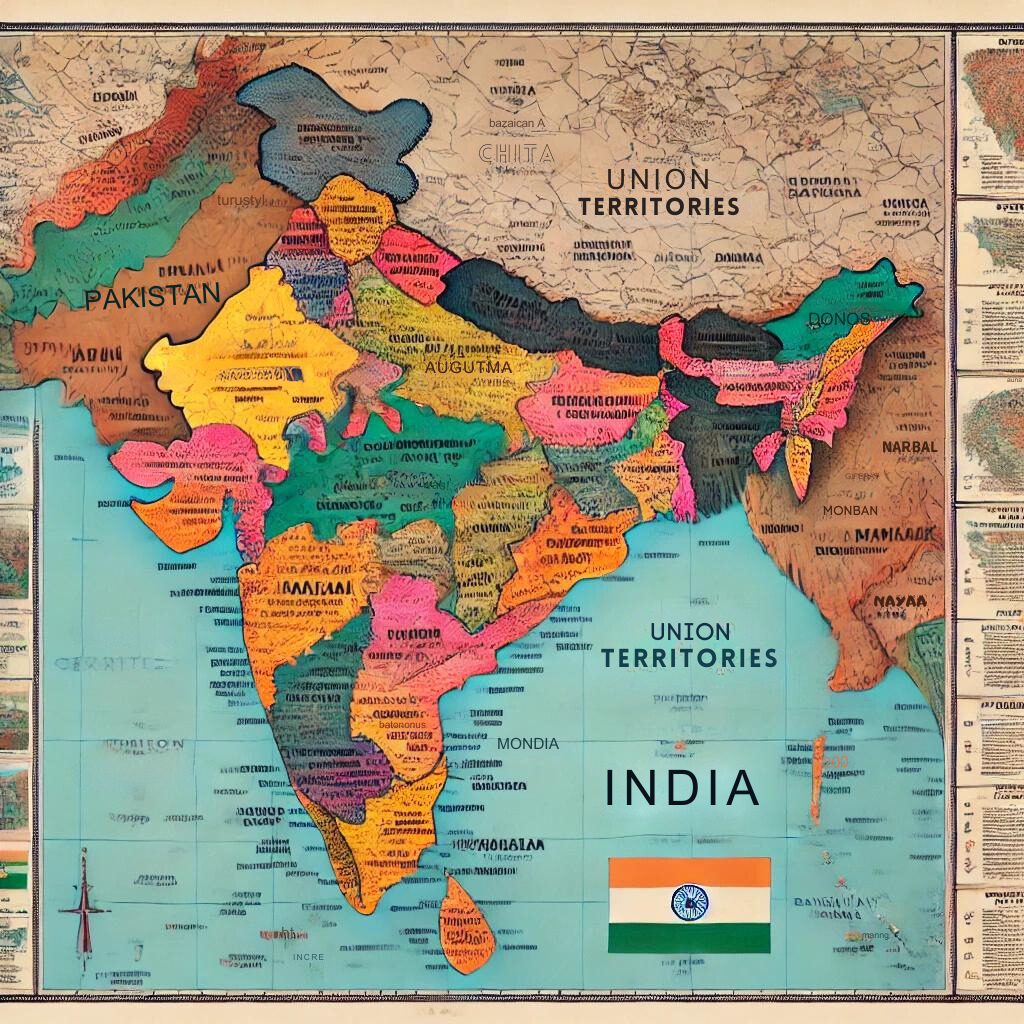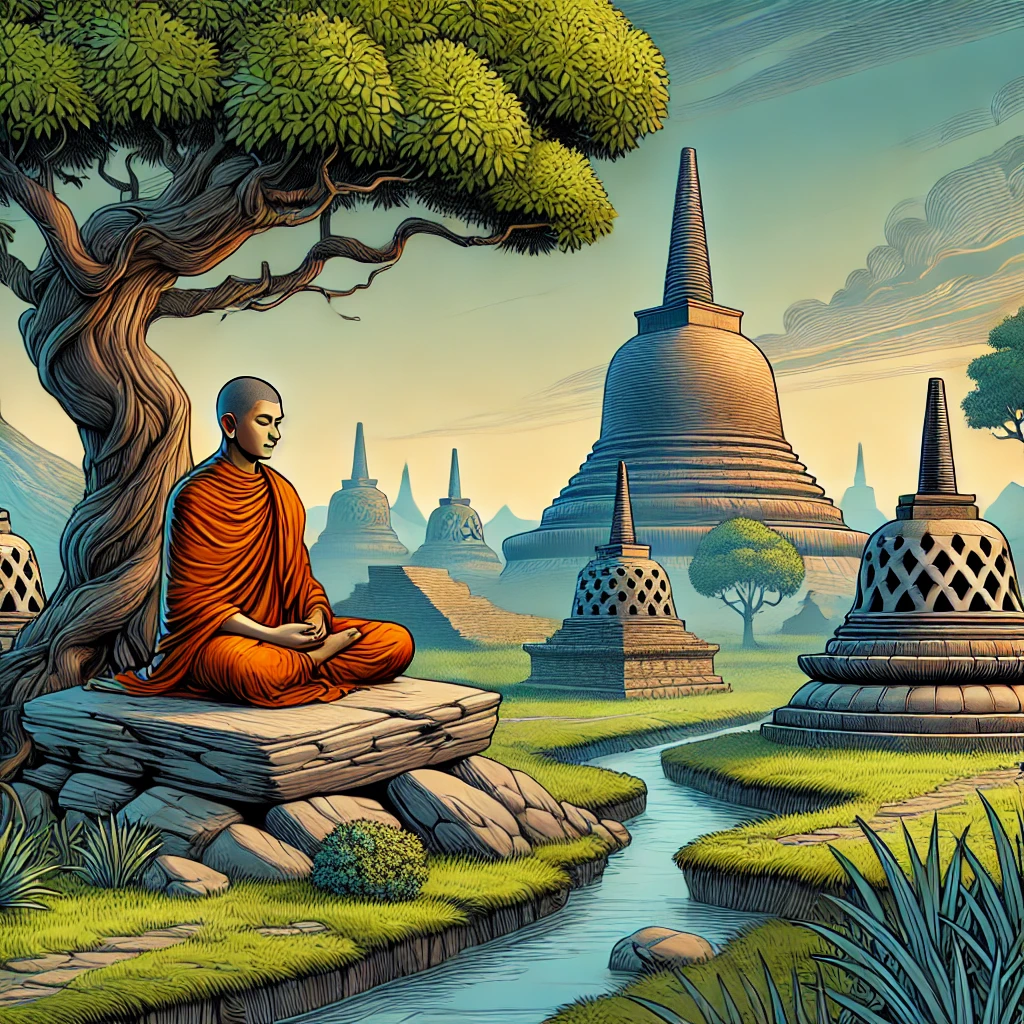The ancient society of India, a civilization that flourished over millennia, offers a fascinating glimpse into a complex variety of cultures, religions, and social structures. From the early Vedic period to the grandeur of the Maurya and Gupta empires, ancient India’s societal framework laid the foundations for modern Indian civilization. The study delves into the complexities of its social stratification, daily life, and cultural advancements, highlighting the profound influences that continue to shape contemporary India.
The social hierarchy of the ancient society of India was deeply intertwined with religious doctrines and economic roles. The caste system, which categorized society into distinct groups based on occupation and birth, played a pivotal role in shaping social interactions and individual identity. The rigid structure, while often criticized, also provided a sense of order and continuity, influencing various aspects of life, including education, marriage, and profession.
The cultural and intellectual achievements of ancient India were remarkable, encompassing advancements in mathematics, astronomy, medicine, and philosophy. The contributions of ancient scholars like Aryabhata and Charaka have left an indelible mark on global knowledge. Additionally, the rich literary traditions, epitomized by epics such as the Mahabharata and Ramayana, continue to resonate with timeless themes of duty, valor, and righteousness, reflecting the values and ethos of ancient Indian society.
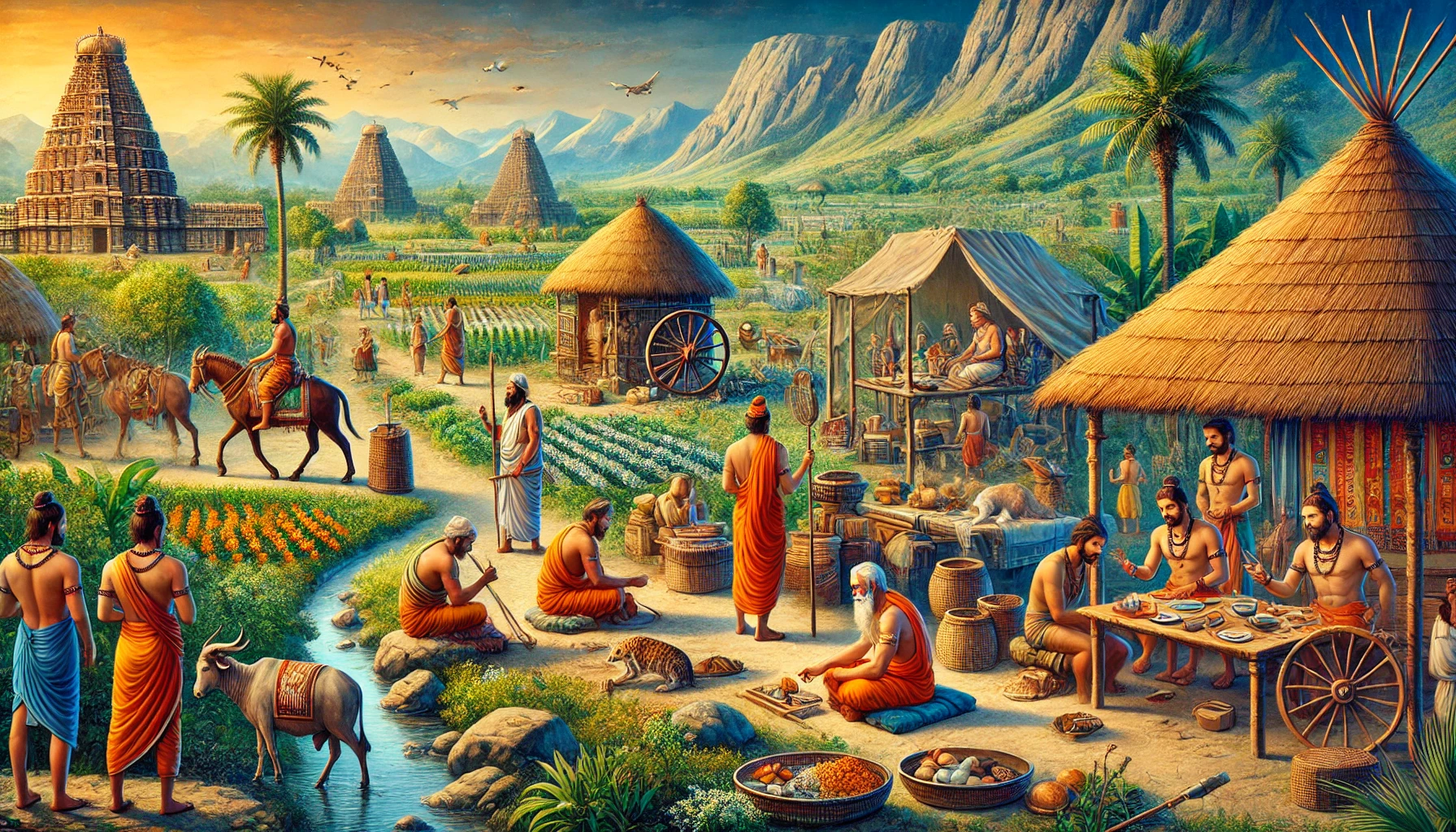
Source of Study
Understanding the ancient society of India involves getting into a vast group of sources. These sources, both literary and archaeological, provide valuable insights into the lives, cultures, economies, and beliefs of early Indian civilizations.
Literary Sources
Vedic Texts
The Vedic texts are some of the oldest and most significant scriptures on the Indian subcontinent. They form the foundation of Hindu religion, philosophy, and culture. The Vedic texts are a collection of ancient religious writings composed in Sanskrit. They are divided into four main Vedas i.e. Rigveda, Samaveda, Yajurveda, and Atharvaveda. Each Veda consists of four parts: Samhitas (hymns), Brahmanas (rituals), Aranyakas (theological discussions), and Upanishads (philosophical teachings). These texts provide a comprehensive understanding of the spiritual, social, and cultural life of the Vedic age and the ancient society of India.
Vedas
Vedas are a collection of hymns or poems, composed in Sanskrit. They act as an important source of information for Ancient Indian Society. There are four Vedas: Rigveda, Samaveda, Yajurveda, and Atharvaveda.
- The Rigveda is the oldest of the four Vedas, composed around 1500 BCE. It consists of 1,028 hymns (Suktas) organized into ten books (Mandalas). The hymns are dedicated to various deities like Agni (fire), Indra (warrior god), Varuna (cosmic order), and Soma (a ritual drink). The Rigveda covers themes such as creation, cosmology, prayers for wealth, health, and prosperity, and philosophical inquiries about the nature of existence.
- The Samaveda, composed around the same time as the Rigveda, is primarily a collection of melodies and chants. It contains 1,549 verses, mostly borrowed from the Rigveda, arranged for liturgical purposes.
- The Yajurveda, composed around 1200-1000 BCE, is a compilation of ritual offering formulas. It is divided into the White (Shukla) Yajurveda and the Black (Krishna) Yajurveda. It provides a comprehensive guide to Vedic rituals and sacrifices, indicating the importance of rituals in maintaining cosmic order.
- The Atharvaveda, composed around 1000 BCE, is a collection of hymns, spells, and incantations. It contains 730 hymns, divided into 20 books (Kandas). It reflects the concerns of everyday life, showing a more practical and less ritualistic aspect of Vedic religion.
Upanishads
The Upanishads, composed between 800-500 BCE, are philosophical texts attached to the end of the Vedic text. There are around 108 Upanishads, with the principal ones being Isha, Kena, Katha, Prashna, Mundaka, Mandukya, Aitareya, Taittiriya, Chandogya, and Brihadaranyaka. They are presented as dialogues between teachers and students, exploring the nature of knowledge and existence and discussing concepts such as Brahman (ultimate reality), Atman (soul), karma (action), and moksha (liberation). They marked the transition from ritualistic practices to philosophical inquiry, laying the foundation for Indian philosophy.
Brahmanas and Aranyakas
- Brahmanas are the prose texts explaining the Samhitas, composed between 900-700 BCE. They provide detailed explanations of rituals, their significance, and the symbolic meanings behind them and serve as a link between the Samhitas and the philosophical discussions in the Aranyakas and Upanishads
- Aryankas are the transitional texts between the Brahmanas and Upanishads, composed around 700-500 BCE. They contain philosophical and meditative interpretations of rituals and reflect the thought practices of ascetics, focusing on inner spiritual practices rather than external rituals.
Epics and Puranas
The Epics and Puranas are integral to understanding the cultural and historical landscape of ancient India. These texts not only provide a glimpse into the religious and philosophical beliefs of the time but also offer valuable insights into the social, political, and moral values that shaped Indian civilization. The Epics and Puranas are foundational texts that offer a wealth of knowledge about ancient Indian society, religion, and philosophy.
- The Ramayana and Mahabharata, with their rich narratives and moral lessons, inspire and influence Indian culture. The Ramayana was written by Valmiki and composed between 500 BCE and 100 BCE. It consists of 24,000 verses divided into seven books (Kandas). The Mahabharata was written by Vyasa and composed between 400 BCE and 400 CE. It contains over 100,000 verses, making it one of the longest epic poems in the world.
- The term “Purana” means “ancient” or “old”. The Puranas were written to preserve ancient legends, and cultural traditions through stories and hymns. Some important Puranas are Vishnu Purana, Shiva Purana, Bhagavata Purana and Markandeya Purana. The Puranas serve as a rich source of information on ancient Indian cosmology, geography, and history.
Buddhist and Jaina Texts
Buddhist and Jaina Texts are an important source for the ancient society of India. They are contemporary to the Puranas and give more detailed information about the Ancient Indian Society.
- The Buddhist texts include Tripitaka (three baskets) and Jataka tales. Tripitaka includes Vinaya Pitaka (rules for monastic life), Sutta Pitaka (teachings of Buddha), and Abhidhamma Pitaka (philosophical analyses). The Jataka tales include stories of Buddha’s previous births, reflecting moral and ethical teachings.
- The Jaina texts include Agamas and Kalpasutra. Agamas contain canonical scriptures of Jainism, having the teachings of Mahavira. Kalpasutra contains chronicles of the life of Mahavira and other Tirthankaras (spiritual teachers).
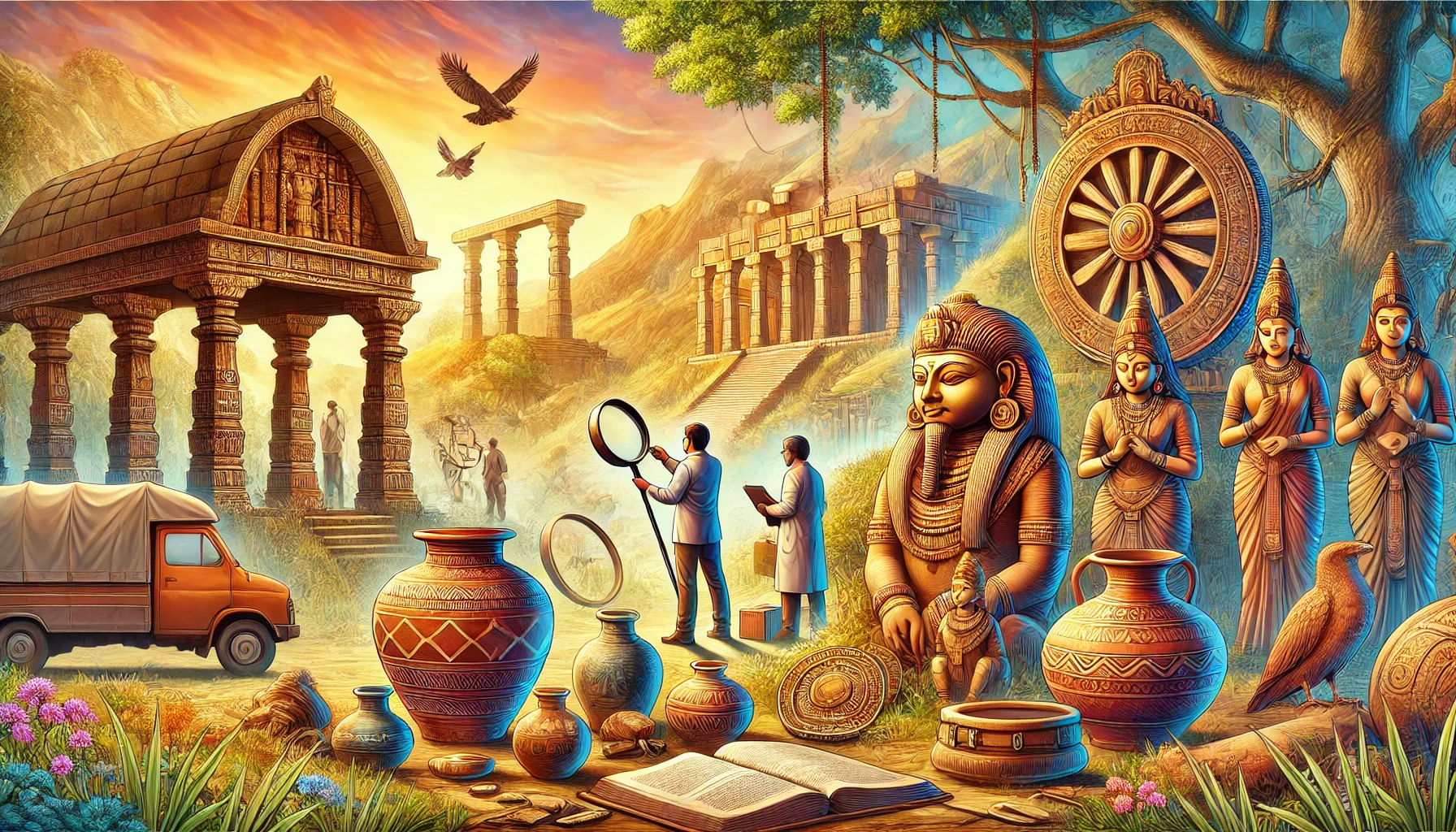
Archaeological Sources
Archaeological sources are invaluable for understanding the ancient society of India. These sources, which include excavations, artifacts, inscriptions, and monuments, provide concrete evidence of the cultural, economic, and social aspects of ancient India.
Excavation and Sites
Various Excavations and Sites provide a number of Archaeological sources of information for the ancient society of India. Excavations on various Indus Valley Civilization and Megalithic sites provide a wide range of information about the society, culture, and traditions of the Ancient Indian Society.
- Some important sites of the Indus Valley Civilization are Harappa, Mohenjo-Daro, Dholavira, etc. The findings from these sites give information about urban planning, drainage systems, seals, pottery, and tools. They provide a detailed picture of one of the world’s earliest urban societies, their technology, trade, and lifestyle.
- Megalithic sites such as Brahmagiri, Adichanallur, etc. give evidence and information about burial sites with grave goods, pottery, and iron tools. They give insights into the funerary practices and social organization of early Iron Age communities as well.
Inscriptions and Numismatics
Edicts, inscriptions, and coins are vital sources for understanding the ancient society of India. Inscriptions, often found on stone or metal, record significant events, grants, and administrative details, offering insights into governance and daily life. Notable are the Ashokan edicts, which propagate moral and ethical guidelines across the Mauryan Empire, revealing the extent of Ashoka’s influence and his commitment to Buddhism. Coins, such as punch-marked and Gupta gold coins, provide evidence of economic activities, trade practices, and political stability. The iconography and inscriptions on coins also reflect the religious and cultural milieu of the time. Together, these artifacts illuminate the socio-economic, political, and cultural dynamics of ancient India.
Foreign Accounts
Foreign accounts are crucial for understanding the ancient society of India, offering an external perspective on its culture, economy, and politics. Greek, Roman, and Chinese travelers and scholars documented their observations, providing detailed descriptions of Indian life. Megasthenes, a Greek ambassador to the Mauryan court, authored “Indica,” describing the prosperity and administrative system of Chandragupta’s reign. Chinese travelers like Fa-Hien and Hiuen Tsang visited India between the 5th and 7th centuries, documenting their experiences in Buddhist monasteries and Indian cities, and noting the societal norms and religious practices. These foreign accounts complement indigenous sources, giving a broader and often more objective view of ancient Indian civilization.
Art and Architecture
Art and architecture are key sources for understanding the Indian ancient society, reflecting its cultural, religious, and social values. Temples, stupas, and cave structures like those at Ajanta and Ellora illustrate the architectural prowess and aesthetic sensibilities of the period. The intricate carvings, murals, and sculptures found in these sites depict mythological narratives, daily life scenes, and religious iconography, providing insights into the artistic traditions and spiritual beliefs of ancient India. The rock-cut architecture of the Ajanta Caves, with its detailed frescoes, and the monumental structures of the Sanchi Stupa and the Shore Temple at Mahabalipuram, exemplify the blend of artistry and religious devotion. These artistic and architectural remnants offer a vivid picture of the sophistication and diversity of ancient Indian society.
Ancient Society of India
The ancient society of India was marked by its structured social order and the interplay of various religious and cultural influences. The evolution from the Indus Valley Civilization through the Vedic Age to subsequent dynasties and empires reveals a dynamic pattern of social changes influenced by geography, economy, and religion.
Social Structure in Ancient India
The social structure of the ancient society of India was a complex and hierarchical system deeply rooted in religious and cultural traditions. Dominated by the caste system, society was divided into four main varnas: Brahmins (priests), Kshatriyas (warriors), Vaishyas (traders), and Shudras (laborers). This stratification governed various aspects of daily life, including occupation, social interactions, and legal rights. Each caste played a specific role in maintaining societal order, with the system perpetuating both social stability and rigidity. Understanding this social framework is crucial for comprehending the dynamics of ancient Indian civilization and its lasting influence on contemporary society.
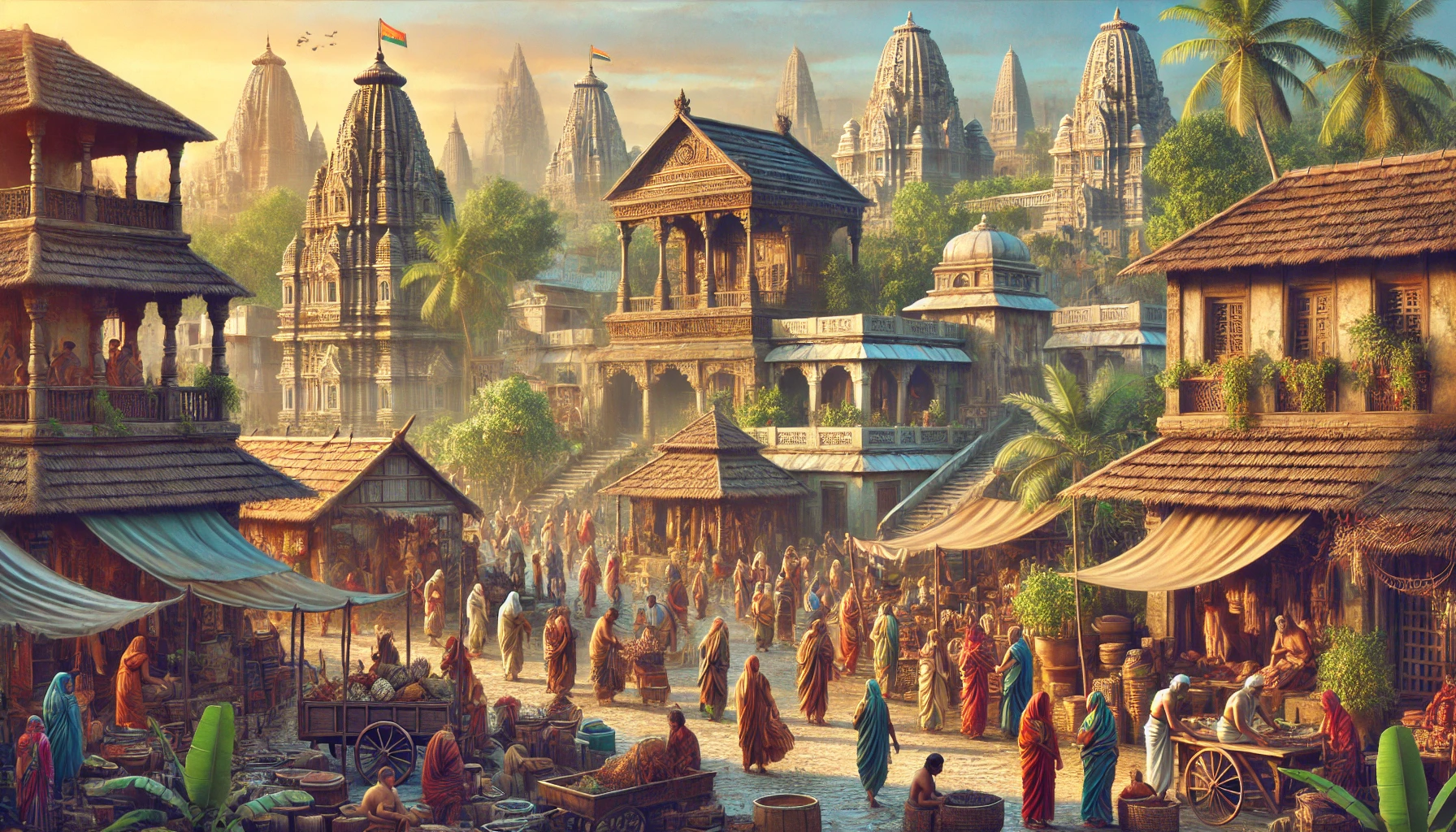
The Varna System
During the Vedic period, society was organized into four main varnas or classes:
- Brahmins (Priests and Teachers): They engaged in religious duties and the study and teaching of sacred texts.
- Kshatriyas (Warriors and Rulers): They were responsible for governance and military protection.
- Vaishyas (Traders and Agriculturists): They engaged in commerce, agriculture, and cattle rearing.
- Shudras (Servants and Laborers): They were responsible for serving the other three varnas.
The varna system, initially flexible, grew more rigid over time, influencing social mobility and interaction.
Family and Marriage
The family unit was the key aspect of ancient society of India, with extended families often living together. Marriage was considered sacred, and various rituals and ceremonies marked different stages of marital life. Patriarchal norms dominated, though evidence suggests that women held respectable positions during early Vedic times.
Education and Occupation
Education in ancient India was primarily accessible to the upper varnas and focused on scriptures, philosophy, mathematics, and sciences. Gurukuls (residential schools) were common, where students lived with their gurus (teachers). Occupations were generally hereditary, particularly in the later periods, with guilds and trade associations playing a crucial role in economic life.
Key Social and Cultural Developments
Ancient society of India witnessed remarkable social and cultural developments that shaped its civilization. The evolution of the caste system defined social hierarchies, while the establishment of major religions like Hinduism, Buddhism, and Jainism influenced ethical and philosophical thought. The period saw significant advancements in art, literature, and science, with contributions such as the Mahabharata and Aryabhata’s astronomical theories. These developments fostered a rich cultural heritage, marked by elaborate rituals, architectural marvels like stupas and temples, and a robust tradition of scholarly pursuits. Understanding these key developments provides insight into the enduring legacy of ancient Indian society.
Urbanization and Trade
The rise of urban centers like Mohenjo-Daro and Harappa during the Indus Valley Civilization showcases advanced urban planning and trade networks. The post-Vedic periods saw further urban development, significantly influenced by trade with other ancient civilizations, including Persia and Mesopotamia.
Religious Transformations
Indian ancient society was profoundly influenced by religious transformations, which also impacted the social structure. The composition of Vedic texts, the rise of Buddhism and Jainism, and the later spread of the Bhakti and Sufi movements indicated shifts towards more personal and devotional forms of religious expression. These movements often challenged the rigid varna system and advocated for a more egalitarian social order.
Art and Literature
Art and literature flourished in the ancient society of India, with significant contributions like the epics of Mahabharata and Ramayana, which not only provided religious guidance but also reflected the social norms and values of the time. Buddhist stupas and Hindu temples also reflect the architectural achievements and religious devotion of ancient Indian society.
Relevance
- Historical Understanding: Provides a foundation for comprehending India’s extensive history and its continuous evolution.
- Cultural Insight: Enhances appreciation of India’s rich cultural heritage and its influence on contemporary society.
- Analytical Skills: Encourages critical analysis of social structures, economic systems, and political dynamics.
- Ethical and Philosophical Knowledge: Offers insights into ancient ethical and philosophical traditions, aiding in the understanding of Indian philosophy.
- Exam Preparation: Covers essential topics in the UPSC syllabus, particularly for History, Culture, and General Studies papers.
- Interdisciplinary Approach: Integrates knowledge across history, sociology, anthropology, and archaeology, promoting a holistic view of ancient Indian civilization.
| A Study on Ancient Society of India |
| 1. Ancient Indian society is studied through various sources, including archaeological findings, literary texts like the Vedas, epics like Mahabharata and Ramayana, and inscriptions. 2. The Vedic texts provide insights into early social structures, rituals, and the transition from pastoral to agrarian lifestyles in ancient India. 3. The caste system, or Varna system, categorized society into four main groups: Brahmins (priests), Kshatriyas (warriors), Vaishyas (traders), and Shudras (laborers). 4. During the later Vedic period, the Varna system became more rigid, with increased social stratification and the emergence of sub-castes or Jatis. 5. Women in ancient India had significant roles in family and religious life, but their status varied across different periods and regions. 6. The Mauryan and Gupta periods witnessed significant developments in administration, economy, and social welfare, including the establishment of trade routes and urban centers. 7. Religious developments included the rise of Jainism and Buddhism, which challenged the existing social norms and offered alternative paths to spiritual liberation. 8. Education and knowledge flourished in ancient India with institutions like Takshashila and Nalanda, contributing to advancements in science, mathematics, and philosophy. |

